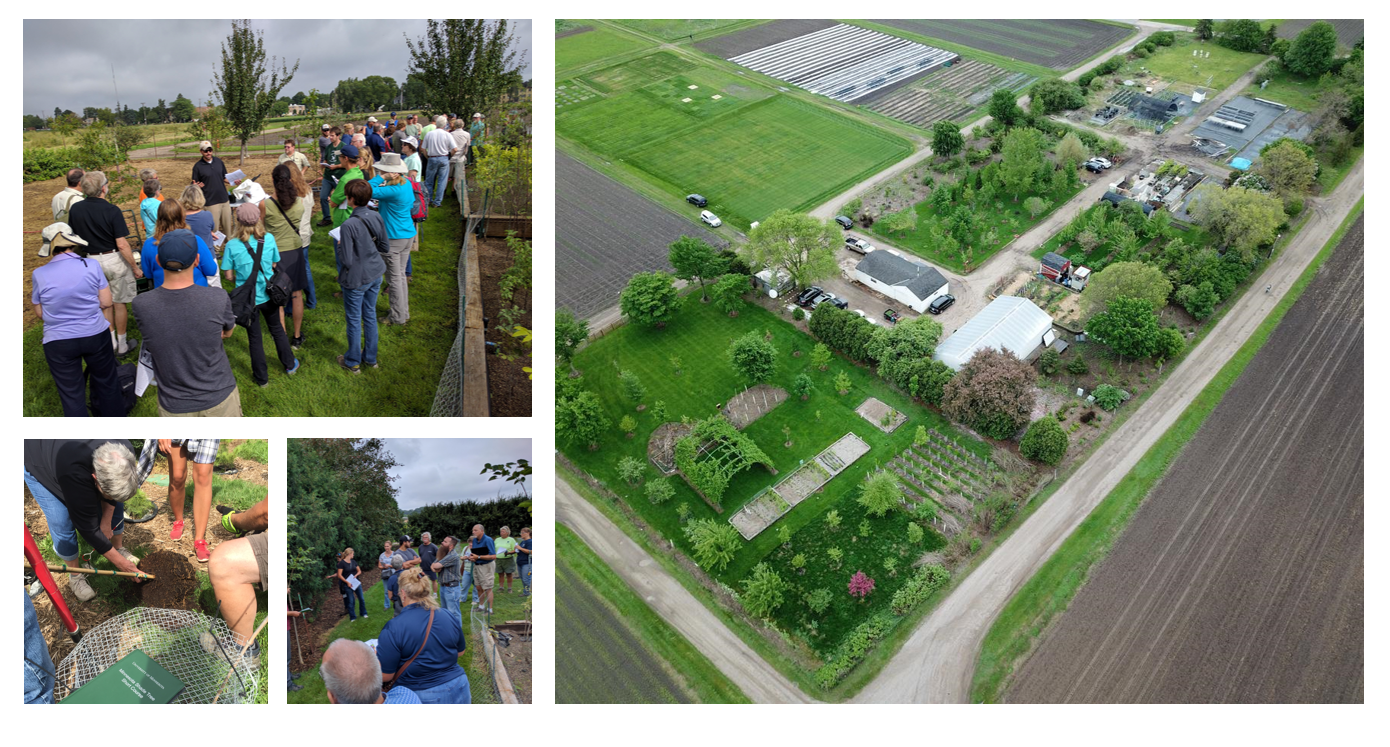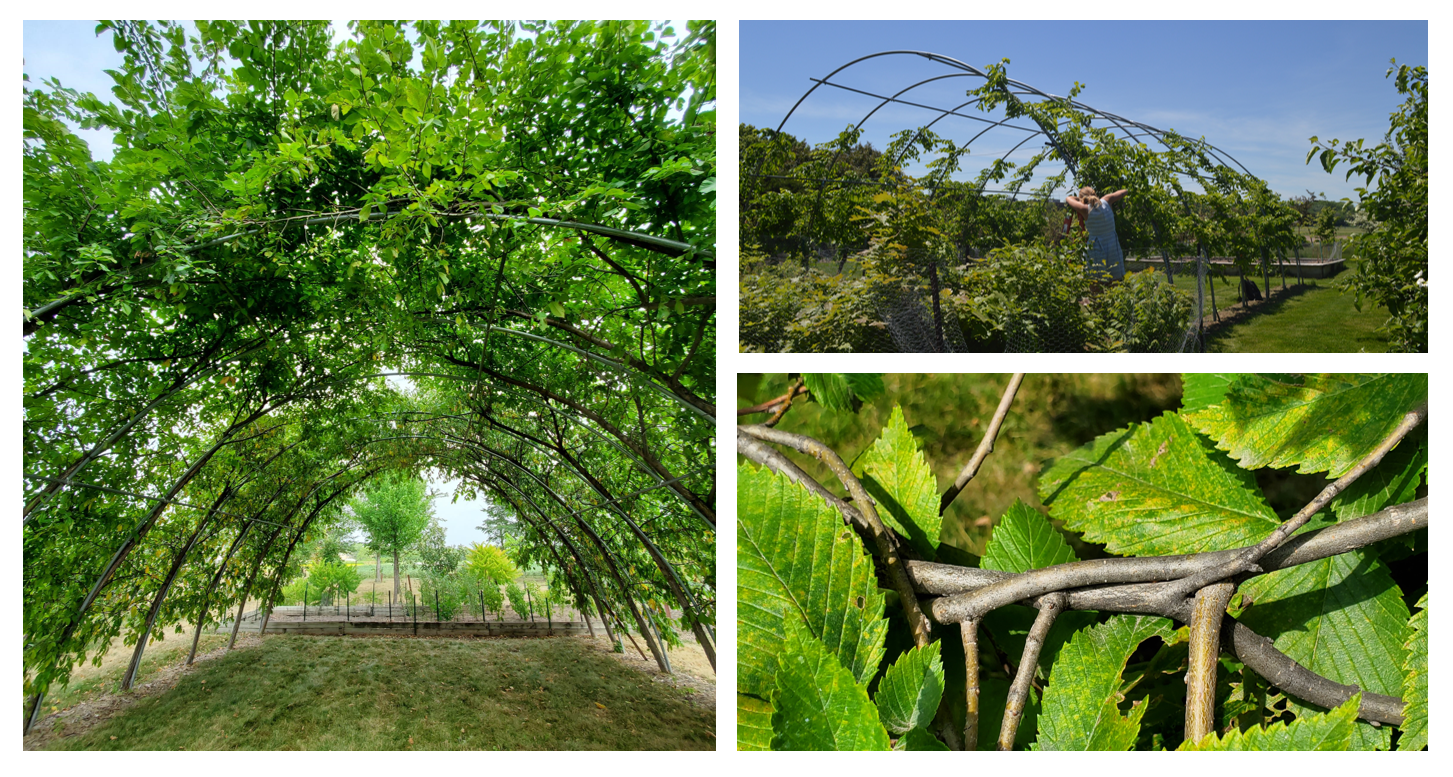We are fortunate to have space in the Minnesota Agricultural Experiment Station on the Saint Paul campus for some of our field research, outreach, and demonstrations. Part of our space is devoted to teaching and demonstrations. The UFOR nursery features a diverse palette of trees and shrubs.
Staff along with graduate and undergraduate research assistants and volunteers help to maintain the demonstration nursery and with field based research projects. The UFOR nursery has also been used for teaching university students, Tree Care Advisors, Minnesota Tree Inspectors, and industry professionals.

Pruning & Landscape Demonstations
Pleaching
Pleaching is a traditional European training and pruning technique that originated as a low cost, low input way to make fences to keep out livestock and intruders. Common tree genus used are Carpinus (bluebeech, musclewood), Tilia (basswood, linden), Fagus (beech), Castanea (chestnut), and Malus (apple). The training process involves weaving branches together from multiple trees, to create a living fence or screen. Vertical branches that stray from the design are pruned halfway and bent into shape. The pruning and bending process keeps the desired shape intact, and also encourages vigorous sprouting from lateral branches, reinforcing the living structure. In the 1800’s, the use of pleaching went beyond the utilitarian fencing or screen and found its way into landscape design as arched walkways. Pleaching offers a green way to create architectural details.
On the north side of the UFOR Nursery there are two parallel lines of New Horizon elms (Ulmus davidiana var. japonica) planted along a curved metal frame. Elm is a less traditional choice, but their flexibility and vigorous growth make elm an excellent choice for pleaching. As the elms have grown, they have been strapped to the frame using tree tie and constrictor knots, creating an archway. The smaller branches are woven together to fill in the sides. Regular pruning keeps the trees from straying from the archway. Pleaching is a time intensive process, but the resulting arched canopy is a wonderful place to host outdoor seminars and talks in a cool shaded area on hot summer days. The two elm rows are just beginning to be interwoven, completing the arch. Once the archway is strong and stable, the metal frame underneath can be removed, and the form will be freestanding.
New Horizon elms have a vigorous growth habit. To keep the arch shape regular maintenance and upkeep are necessary. During the dormant season branches that have left the archway are removed. During the spring, when the limbs are most flexible, branches from adjacent trees are woven together. This maintenance work can be performed from an orchard ladder. When bending larger stems onto the frame a come along, or other mechanical pulling device may be used to hold the stems in place for retying. Once the elms have reached a larger diameter, and the union between both sides of the arch is solidified, the structure can be climbed, making maintenance easier.
- Nick Neylon, August 2021
For more information on pleaching, consider reading The American Horticultural Society Pruning and Training by Christopher Brickell and David Joyce
